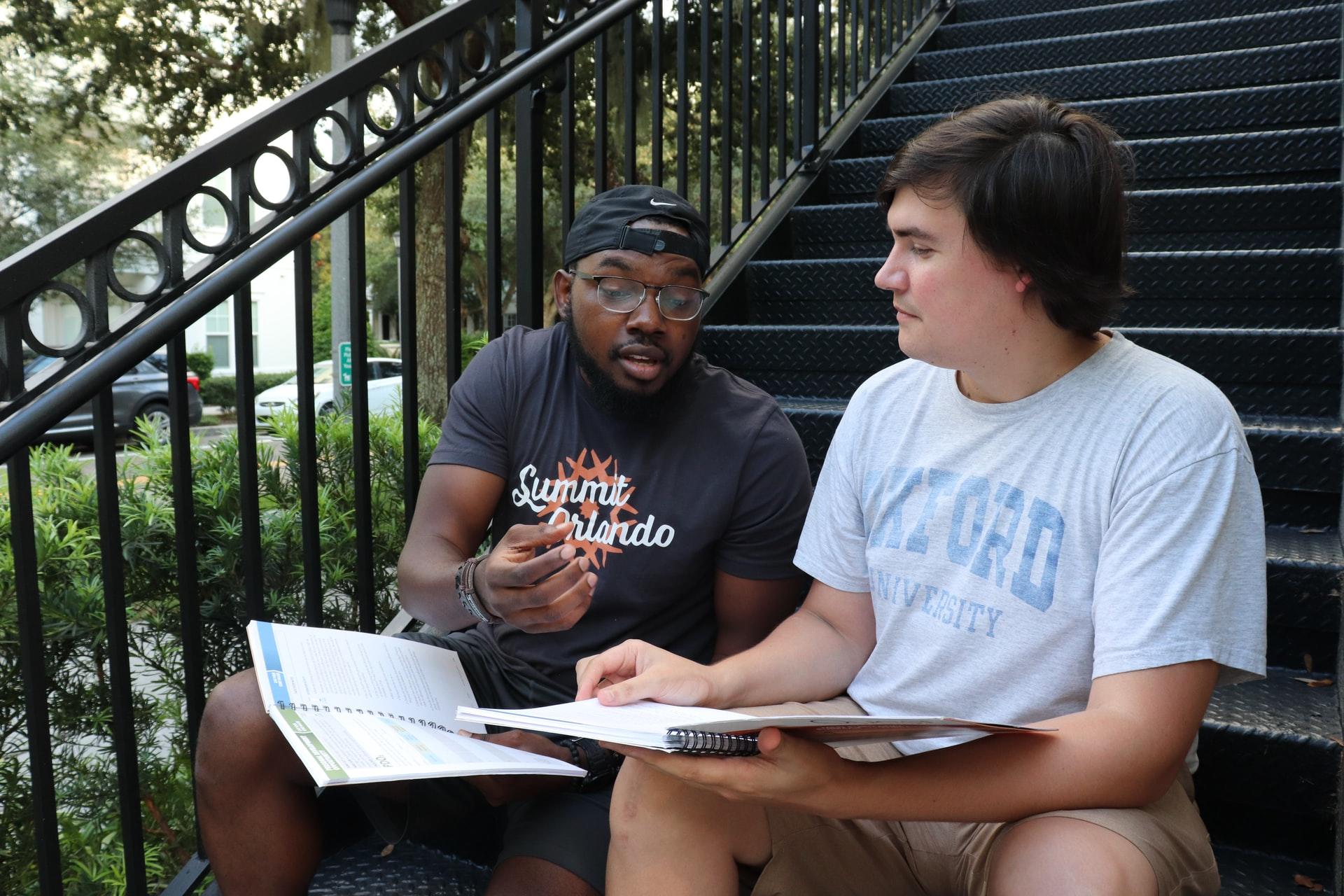Chapters
We have to face it: teaching is hard work. It's not just a matter of leading group after group of students who, on any given day, may or may not want to be in class, let alone in your room. It's all of the intangibles, like being constrained in what and how you can teach, having to stick with the set curriculum no matter what, and being subjected to students' disdain or disinterest in everything from the educational processes to you, personally, and how you conduct your lessons.
All of that and more (administrative tasks! Grading papers! Attending endless meetings!) that chips away at your enthusiasm for teaching and your desire to give your best to your students and make a difference in their lives.
None of those external variables is set to end any time soon; indeed, they're projected to multiply. But, individually and collectively, must they signal the end to any joy there is to be had in teaching?
Consider these ideas:
- alternate between a teacher-led and student-led instruction model
- investigate how you could implement differentiated learning strategies in your student groups
- place more emphasis on your role as an academic coach
- start a peer tutoring program
- include more technology in your lessons
- modify your teaching to address different types of intelligence
- learn from your students, even as they learn from you
- don't limit innovation - yours or your students'
All of these initiatives and the others we'll cover in this article are suitable for classroom teachers as well as private tutors, particularly if you tutor small groups of students.
Whether you are a seasoned tutor or new to the world of tutoring, you will be well aware that each student is different, and what works for one doesn’t work for another. This article's purpose is to give you some ideas on how to mix and match learning initiatives to energise your tutoring sessions and, if you teach in school as well as tutor, to rediscover the passion that led you to a career in teaching.

Tailor Your Lessons to Your Students' Learning Styles
Some learners are reflective; they like to thoroughly prepare before each tutoring session and prefer to have access to the material to be covered in class beforehand. They like to go over it a few times so they'll feel confident in knowing something about the subject you will discuss during that day's lesson.
Others prefer to approach each learning session as a 'blank slate' so they can learn by doing. For instance, they might prefer to perform a chemical experiment in a laboratory rather than swot for hours over the structure of molecules.
As a classroom teacher, you can mix up your delivery to address your students' learning preferences. Not only will it show your students that you're considerate of them but it will keep them awake and attentive, just to see what you'll do next.
As a private tutor, tailoring your lessons to individual student preferences will be much easier because you won't have either the time constraints or the need to consider every other student in the group. Thus, you're free to emphasize the teaching methods the current student prefers - but you should still mix things up a little, if only to encourage them to broaden their learning experiences.
Note that, as an educational philosophy, learning styles - the idea that there are auditory, visual and kinesthetic learners, have largely been debunked. However, students still have their unique learning preferences and, while they may touch on the 'styles' myth, they are still valid and should be considered as you adjust your pedagogy from student to student.
After all, it's what works best according to kids.

Take a Look at Innovative Ways of Teaching
Despite the concept of learning styles having been debunked, many educators still cling to the idea that they must address those alleged styles for their students to find academic success. Maybe they just haven't caught up with the latest buzz in education?
For classroom teachers, that's not always easy to do, particularly as they careen from one administrative mandate to the next amidst their succession of lessons. For private tutors, it's a different story.
You have the time to read up on the latest developments in education and, more importantly, the freedom to implement the initiatives you find helpful. You could even take the best from these new styles of teaching and adapt them to your tutoring sessions.
Spaced learning is a novel concept showing great promise. A typical class involves presenting students with a topic (usually via a 10-minute visual presentation) followed by a 10-minute break during which students perform a physical activity like playing a sport.
After the action-packed phase, students see the same presentation, this time with blanks they have to fill in, followed by another activity break.
During a typical class, there are three ‘information input’ sessions divided by two ‘active’ 10-minute breaks. The system may be unfamiliar, but its proponents claim noticeable benefits. Studies have shown that short bursts of information followed by physical activity create new connections in the brain which encourage memory retention.
The Engagement Theory of learning calls for you to encourage your students to explore the real world so they can see how the subjects they are learning apply. For instance, they might visit the newsagent to learn about money transactions or a dress shop to learn about fashion.
Could you find ways to incorporate these systems into your tutoring sessions?
On Being Innovative
Some students are able to grasp concepts faster than others, with virtually no help at all. Other students need to examine the information or have it presented a few different ways before they can internalise it. It can be frustrating in the extreme, especially if you've already been over the same material more than twice and doubly so if you've been teaching/tutoring for a while.
However, don’t despair if you have to repeat facts and concepts you have already spent a considerable amount of time explaining. Break out the memory helpers! Mnemonics and other forms of word association work well with some students; for others, you might try setting the information to music. Something along the lines of Dem Bones or The Months of the Year, but suitably advanced for the students you teach.
If you're not musically gifted, you could either search for suitable songs or have your students come up with some. In fact, the latter solution may lead your student to understand the subject material better than explaining it yet again.
You may also find success using learning maps and mind maps, which take a visual approach to help with synthesising and memorising large quantities of information. Even such a small thing like changing where you hold lessons could make a huge difference to your students' enthusiasm levels!

Learn from Alternative Education Methods
For some students, the newest is not necessarily the best. Whether you're a classroom teacher, a private tutor or both, check out tried-and-tested teaching philosophies like Steiner-Waldorf and Montessori. They both have a long history and a proven record of success, earning rave reviews from teachers and parents alike.
And the students too, of course.
Are you curious about how alternative teaching methods could help your students develop their critical thinking skills?
Be Tech-Savvy
Students today tend to have an almost intuitive relationship with technology; they're not called digital natives for nothing.
Incorporating tech into your lessons, whether in the classroom or during private tutoring sessions serves you in two ways. First, you won't come across as an old fuddy-duddy with no patience for iPads and, second, you're signalling your commitment to meeting your kids where they're most comfortable: in the digital realm.
How could you incorporate these devices into your tutoring sessions? There are thousands of apps on almost every subject you can think of, from mathematics to science and literature.
You can use technology outside of your tutoring sessions, too. Interactive apps and software solutions allow you to comment on a student’s work as it progresses or make your own additions to their mind maps.
When your students see that their tutor’s interest in their learning extends beyond the official paid hour, they'll be much more likely to find their motivation to go beyond the 'call of duty’ when it comes to learning.
Beware, though, that if you bring tech solutions, the entire session should not be spent on the gadgets. You could play a game to introduce the session or use them to wrap up a productive lesson, maybe. Or, if you want to see for yourself how effective the Engagement Theory can be, play an exercise video during one of your breaks.

Keep Things Fresh
While working at the library, I witnessed a tutor working with a parade of students. One after the other, they sat at his table. Once they'd unpacked their bookbag, the tutor accepted the papers they handed him, gave them a once-over and then, began the lesson. This was marked by the student opening their book and, soon, beginning to write.
It's hard to imagine that either the tutor or the students came away from the experience invigorated and empowered. After being in the vicinity and seeing them, I certainly didn't feel that way. I was left wondering if that's always how their lessons go.
An interesting, engaging lesson plan may only work well for two or three lessons but don't be surprised if the magic wears off when the novelty does.
Keep your students on their toes by introducing new activities every session (e.g. games testing their maths skills, songs illustrating a theme or poem recently studied or a brand new app that encourages them to put what they have learned to practical use). If that proves too demanding, every few sessions would work well.
Granted, as a classroom teacher, that might be hard to pull off but as a private tutor, you have the latitude to manage these pedagogical updates without too much trouble.
You also have much more leeway in arming yourself with a range of teaching tools and accessories. There are innumerable examples of such but, fundamentally, only ten things you should never forget to bring to every lesson.
Ask Your Students How You Can Improve
Sometimes, it pays to get to the point. How about ending a tutoring class by asking your student how you feel you can make the class more beneficial to them? Some students will ask for more variety in your teaching methods; others will tell you that you are going too fast and they need to spend more time on the basics.
During this conversation, you can also suggest ways you feel your student can make the most of what you are teaching them through additional projects they can complete in their own time.
Or you could take the Superprof approach.
Superprof tutors generally offer their first hour at no charge so they can get to know their students, discover what they need help with and learn about their study preferences. They ask questions like "What are you looking for in a tutor?" and "How could I best meet your learning needs?"
This isn't just idle chatter. During the conversation, the Superprof tutor takes careful notes, building a student profile page they can refer back to if/when difficulties arise.
If that piqued your interest, you can look into Superprof online tutoring jobs UK here.
Asking these questions at the start of your mentoring relationship will show the student that you plan to make a substantial investment of time, energy and resources on their behalf. Thus, they will feel motivated to match your dedication by putting in extra effort into their studies.
For classroom teachers, it might be a bit harder to ask each of your students how you could be a better teacher but perhaps the Superprof principle could pay off for you, too.
You could hand out surveys at the beginning and end of the term, semester or school year for your groups to fill out. They may feel more secure answering a survey writing, particularly if it's anonymous. It will spare them the possible embarrassment of speaking out in front of the class and, cloaked in anonymity, they won't need to worry about being unfairly targeted for the answers they give.
Not that you would target anyone, of course.

Make it Personal
Without putting in too much effort, you could probably recall a teacher who changed your life, showed you the magic and power of learning, inspired you to become a better student and gave you the push you needed to make it into University or the course of your choice.
Most likely, what made this teacher so special was the personal interest they took in you; their gentle understanding of your circumstances, obstacles and goals. This teacher or tutor probably went that extra mile to bring you a book you needed or told you how much they believed in you.
It is amazing how something as simple as a lack of confidence in one’s own skill and capacity can be a student’s greatest downfall.
Just as you likely benefitted from an amazing teacher or two during your school days, you now have the chance to be that source of inspiration for your students.
Point out their unique characteristics and academic strengths, and promote the idea that they should develop and pursue their talent. For example, if they express themselves well in writing, encourage them to hone their skills with the written word. Maybe they could join the school newspaper staff, start a blog or have their work published.
Sometimes, something as simple as telling your students they are amazing, even in ways unrelated to academics is the only thing they need to reach for the stars.
Even something as seemingly impersonal as bringing the lesson to life for your students can make a huge difference in their attitude towards learning and, by extension, improve their self-esteem and build their self-confidence.
At the very least, they may see you as a role model they wish to emulate but, on the whole, they will understand how much effort you put into teaching them what they need to know for a successful life.
Obviously, this tip applies to both classroom teachers and private tutors. Indeed, teachers are more likely to reach disadvantaged students for whom private tutoring would be inaccessible.
We hope that you have found this blog post interesting, and would love for you to share with us what you have found works for you, via the below comments box.
Whether a classroom teacher who moonlights as a tutor to make ends meet or an independent tutor, you have to decide how much to charge for your lessons. You have a lot to consider before setting your rates, after all.











